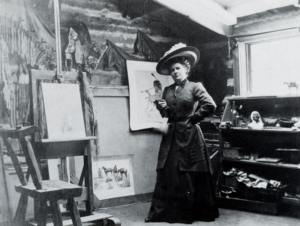March 31
1889: The Eiffel Tower officially opened.
1903: Richard Pearse allegedly made a powered flight in an early aircraft in New Zealand.
1906: The Intercollegiate Athletic Association of the United States (later the National Collegiate Athletic Association) was established to set rules for college sports in the United States.
1909: Construction of the ill-fated RMS Titanic began in Belfast, Northern Ireland.
April 1
“XYZPDQ!”
A.D. 40: The first recorded April Fools Day joke took place in Rome, when
Emperor Caligula said to his uncle, Claudius, “Braccae tuae aperiuntur”
(“Your fly is open”)
1519: Hernán Cortez of Spain introduced smallpox to the Aztec Indians of Mexico.
1789: Meeting in New York City, the United States House of Representatives held its first quorum and elected
Frederick Muhlenberg of Pennsylvania as its first Speaker.
1970: President Richard Nixon signed the
Public Health Cigarette Smoking Act into law,
requiring the surgeon general’s warnings on tobacco products and banning cigarette advertisements on television and radio in the United States, starting on Jan. 1, 1971.
April 2
1863: Food shortages incited hundreds of
angry women to riot in Richmond, Virginia, and demand that the Confederate government release emergency supplies.
1865: Confederate President Jefferson Davis and most of his traitorous Cabinet fled the Confed-erate capital of Richmond, Va.
1902: Electric Theatre, the first full-time movie theater in the United States, opened in Los Angeles, Calif.
1917: President Woodrow Wilson asked the U.S. Congress for a declaration of war on Germany.
April 3
1968: Martin Luther King Jr. delivered his “I’ve Been to the Mountaintop” speech in Memphis, Tenn.
1973: Martin Cooper of Motorola made the first handheld mobile phone call to Joel S. Engel of Bell Labs.
1981: The Osborne 1, the first successful portable computer, was unveiled at the West Coast Computer Faire in San Francisco.
1860: The first
successful United States Pony Express run began from St. Joseph, Mo., to
Sacramento, Calif.
April 4
1147: First historical record of Moscow, Russia.
1818: Congress adopted the flag of the United States with 13 red and white stripes and one star for each state (then 20).
1841: William Henry Harrison, ninth U.S. president, died after only 31 days in office.
1850: Los Angeles, Calif., was incorporated as a city.
1859: The song “Dixie” had its debut by Bryant’s Minstrels in New York City in the finale of a blackface minstrel show.
1873: The Kennel Club was founded in London, the first and oldest official registry of purebred dogs in the world.
1887: Argonia, Kansas, elected Susanna M. Salter as the first female mayor in the United States.
April 5
1614: Native American Pocahontas married English colonist John Rolfe in Virginia.
1909: Albert R. Broccoli, U.S. film producer of the hugely successful James Bond franchise, was born this day (died 1996).
1922: The American Birth Control League, forerunner of Planned Parenthood, was incorporated.
1923: Firestone Tire and Rubber Company began production of balloon tires.
April 6
1947: The first Tony Awards were presented for theatrical achievement at the Waldorf Astoria hotel in New York City.
1965: “Early Bird,” the first communications
satellite to be placed in geosynchronous orbit, was launched at Cape
Canaveral.
1869: John Wesley Hyatt patented celluloid, an ivory substitute.
In celebration of Women’s History:
Nancy Cooper Russell,
wife and business manager of
Montana’s famed Cowboy Artist
Image: Nancy Russell in Charlie’s log cabin studio, 1908.
Courtesy of the Gilcrease Museum, Tulsa, OK
Courtesy of
Montana Historical
Society
Nancy Russell was a woman ahead of her time. A self-taught busines woman with the propensity to take charge, Nancy helped Charlie Russell become the highest paid living artist of his time.
Under Nancy’s guidance, the Russells traveled extensively, exhibiting his artwork in major cities across the United States as well as Canada and London.
While Charlie’s paintings vividly captured the waning days of the mythical Wild West, much of the inspiration for his remarkable art came from the natural landscape of Montana itself.
In 1905, the Russells bought land in what would become Glacier National Park.
Thereafter, they spent every summer for the next twenty years at the cabin they built on the shores of Lake McDonald, entertaining friends and prominent artists of the day, exploring the park, and reveling in the rugged beauty of the mountains.

